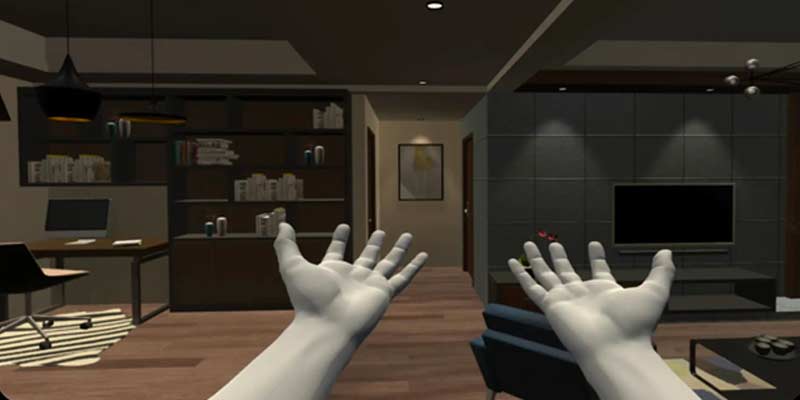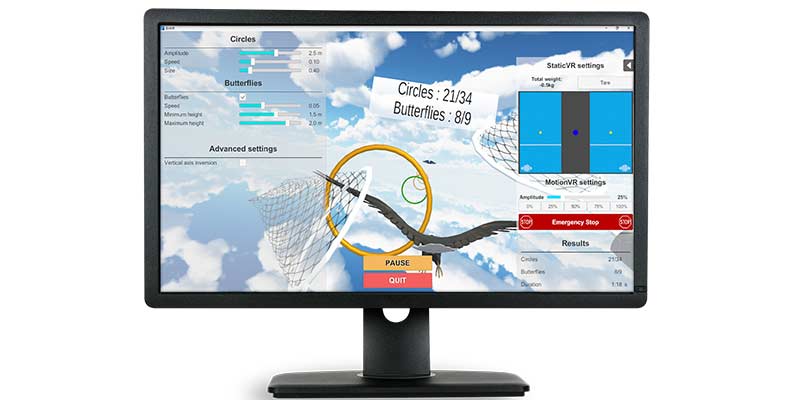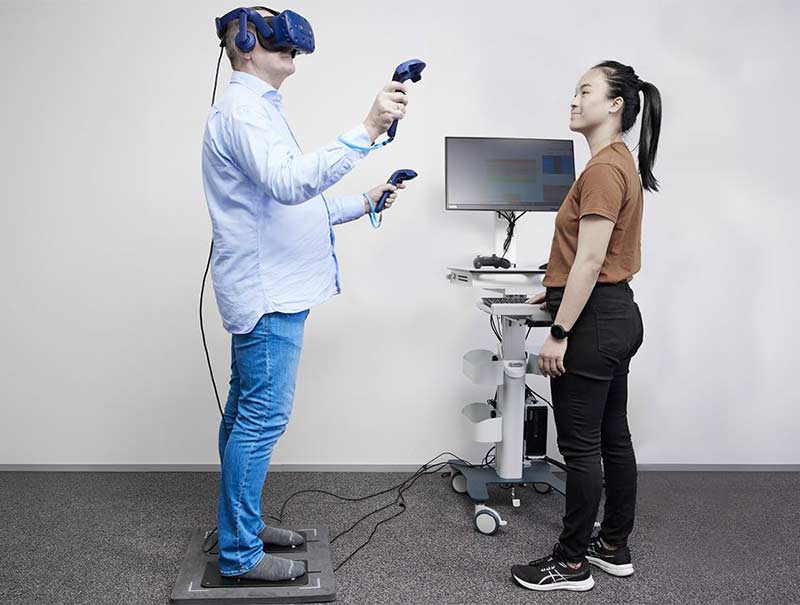Virtual reality (VR) is revolutionizing various fields, and physical therapy is no exception. This innovative technology transforms how physical therapists approach rehabilitation, offering new ways to engage patients and enhance treatment outcomes.
This blog provides comprehensive answers to the most frequently asked questions about the use of VR and physical therapy, helping you understand its potential and applications.
1. How is VR used in physical therapy?
VR in physical therapy involves using VR devices to create immersive experiences that simulate real-world scenarios. These computer-generated virtual environments allow patients to perform exercises and activities tailored to their rehabilitation needs.
For example, these virtual simulations can be customized to target specific Parkinson's disease symptoms like postural instability and gait issues, enabling patients to practice functional movements safely.
2. What conditions can VR therapy help within physical rehabilitation?
VR therapy can assist with a wide range of conditions, including stroke recovery, traumatic brain injury, spinal cord injury, Parkinson's disease, phantom limb pain, visual vertigo, and musculoskeletal disorders. Virtual reality therapy is also used for post-surgical rehabilitation and managing chronic pain.

Example of virtual reality treatment for phantom limb pain with Virtualis VR.
3. What are the benefits of using VR in physical therapy?
The benefits of VR in physical therapy are numerous. One primary advantage is increased patient engagement. Traditional therapy exercises can be repetitive and monotonous, decreasing motivation and adherence. VR also offers a dynamic and interactive experience that keeps patients interested and motivated.
Additionally, VR provides real-time feedback, allowing patients to see their progress and adjust as needed. This immediate feedback can enhance the effectiveness of therapy and help patients achieve their goals more quickly.
Another significant benefit is the ability to create customized therapy programs. Physical therapists can tailor VR exercises to meet each patient’s specific needs and abilities, ensuring that the therapy is both challenging and achievable. This personalized approach can lead to better outcomes and a more positive therapy experience.

Example of how VR therapy engages patients with gamification of rehabilitation using Virtualis VR.
4. Is VR therapy effective for stroke rehabilitation?
Virtual reality therapy has shown promising results in stroke rehabilitation. Stroke patients often experience impairments in motor function, balance, and coordination. VR therapy can help address these issues by providing repetitive and task-specific training in a controlled environment.
For example, a stroke patient might use VR to practice reaching and grasping objects, improving their hand-eye coordination and fine motor skills. Research supporting virtual reality in physical therapy has shown that VR therapy can be as effective as traditional therapy methods, and in some cases, even more so.
5. Can VR therapy help with pain management?
VR therapy can be an effective tool for managing chronic pain. One of the ways it achieves this is through distraction. By immersing patients in engaging virtual worlds, VR can divert their attention from pain, reducing their perception of it. This can make it easier for patients to tolerate physical therapy exercises and improve their overall experience.
Additionally, VR can provide relaxation and stress relief, reducing pain. For example, a patient with chronic back pain might use VR to explore a calming virtual beach, helping to alleviate their discomfort and improve their mood.
6. What equipment is needed for VR physical therapy?
The equipment needed for VR physical therapy typically includes VR headsets, motion sensors, and sometimes additional accessories like hand controllers or treadmills. Patients wear VR headsets to immerse them in the virtual environment while motion sensors track their movements and provide real-time feedback. Hand controllers can be used to interact with virtual objects, and treadmills or other specialized equipment may be used for specific exercises.

Virtualis Static VR: A comprehensive setup including VR goggles, controllers, trackers, and static force plates designed for static posturography assessment and balance training.
Browse VR Equipment
7. Are there any risks or side effects of VR therapy in physical rehabilitation?
While VR therapy is generally safe, some patients may experience side effects such as motion sickness, dizziness, or eye strain. These side effects are usually mild and temporary, but physical therapists must monitor patients closely and adjust the VR settings to minimize these risks.
For example, reducing the intensity of the virtual environment or taking breaks during the session can help alleviate symptoms. Additionally, patients with certain medical conditions, such as epilepsy, should consult with their healthcare provider before starting VR therapy to ensure it is safe for them.
8. How does VR therapy improve balance and coordination?
VR therapy can improve balance and coordination by providing exercises that challenge these skills in a controlled environment. For example, a patient recovering from a stroke might use VR to practice standing on one leg or walking on a virtual balance beam. These exercises can help improve their stability and coordination, making it easier for them to perform daily activities.
9. Is VR therapy covered by insurance for physical therapy?
Coverage for VR therapy varies by insurance provider and plan. Some insurance companies may cover VR therapy if it is deemed medically necessary and prescribed by a healthcare professional. It is essential to check with your patient’s insurance provider to understand your coverage options.
For information on CPT codes for vestibular therapy, please refer to our recent blog: Beginners Guide to Practicing Vestibular Physical Therapy
10. What is the future of VR in physical therapy?
The future of VR in physical therapy looks promising. As VR technology advances, VR systems are becoming more sophisticated and accessible. We can expect to see more widespread adoption of VR in physical therapy, with continued research supporting its effectiveness and expanding its applications.
Home-based VR therapy may also become more common, allowing patients to receive VR therapy in the comfort of their own homes. This can be particularly beneficial for patients with mobility issues or those who live in remote areas. Additionally, advancements in VR technology, such as improved graphics and more realistic virtual environments, will further enhance the therapy experience and outcomes.
Seeking expert guidance on integrating virtual reality therapy into your practice? Reach out to your nearby e3 Diagnostics representative today.
Contact Us
Explore our selection of virtual reality therapy solutions for your clinic
Browse VR Solutions
Other Good Reads: Discover how VR rehab enabled a patient to recover from severe post-concussion symptoms.
Follow us on Social!



If you haven't already, make sure to subscribe to our newsletter to keep up-to-date with our latest resources and product information.